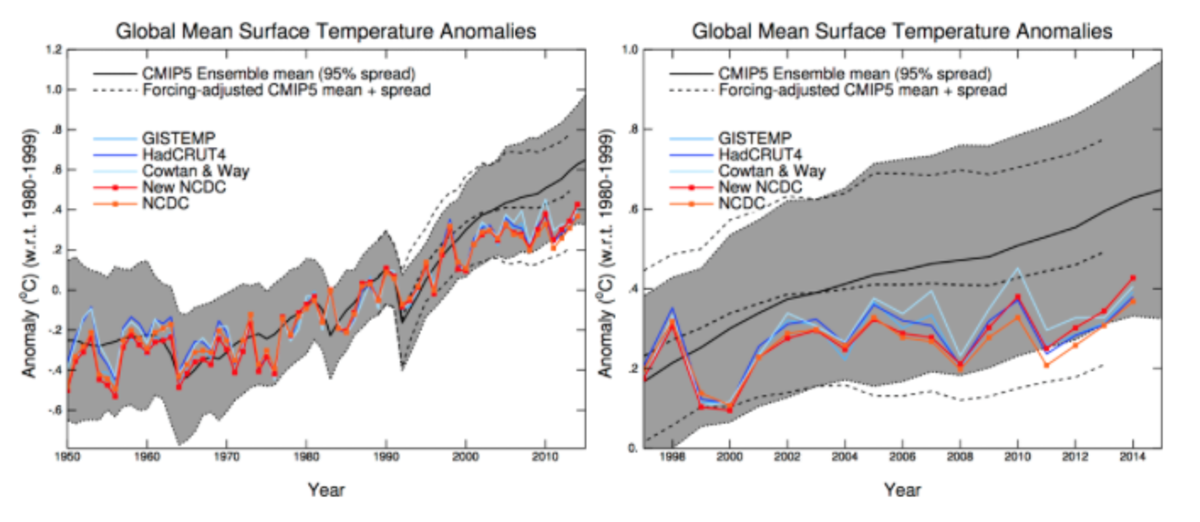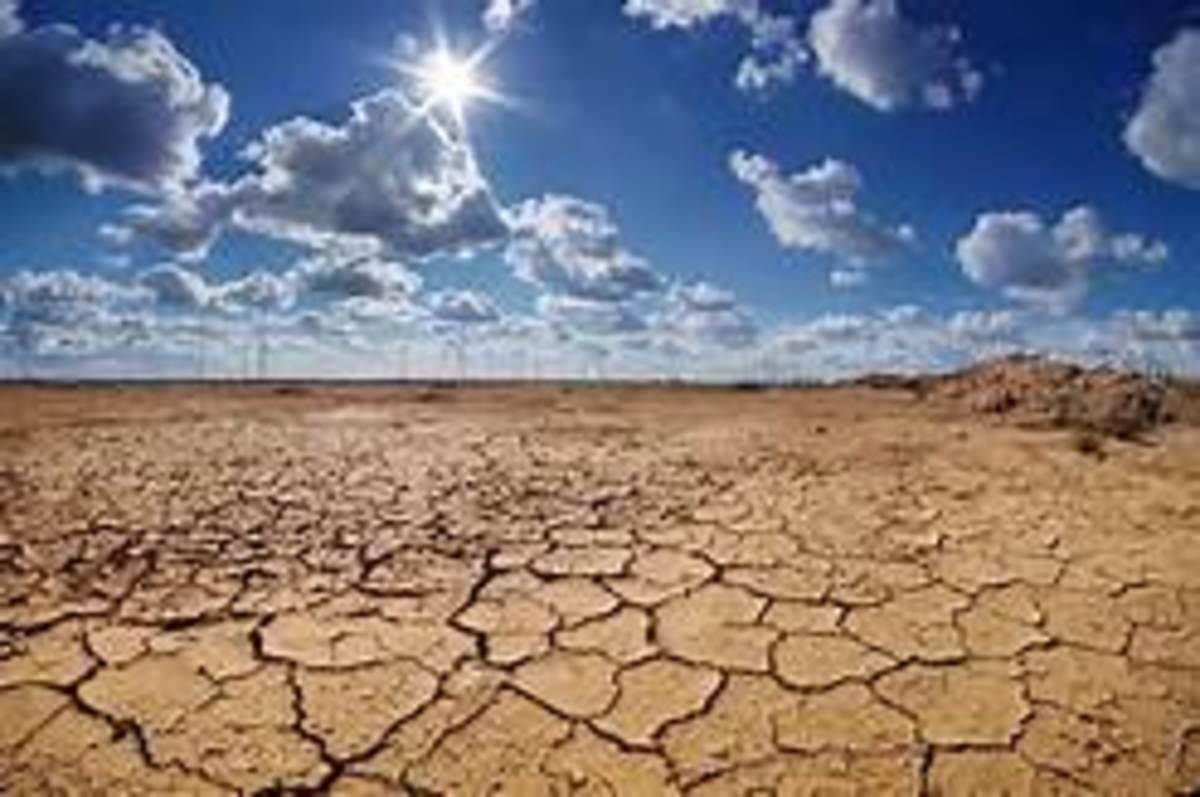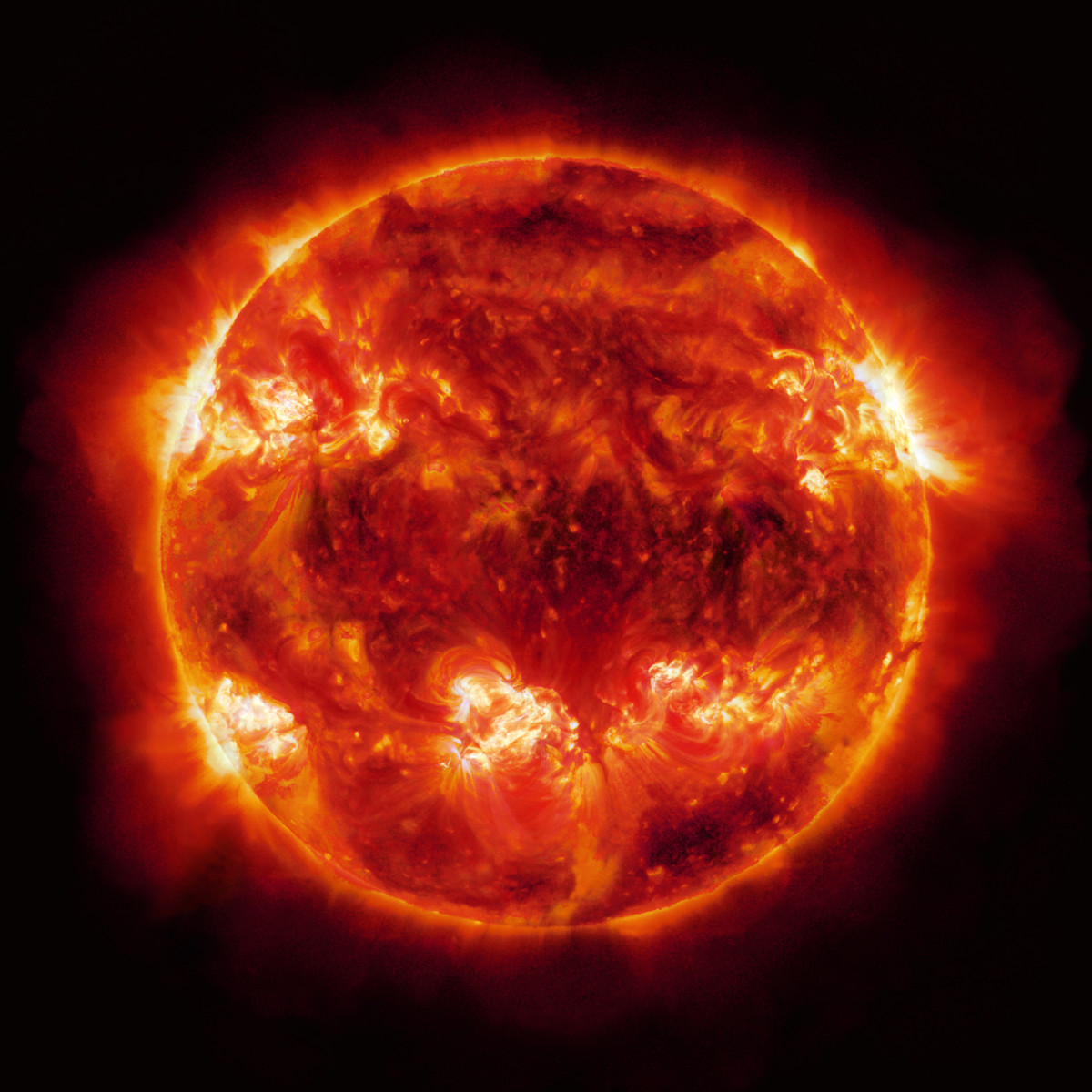How to Survive Climate Change and Monoculture with Aquaponics
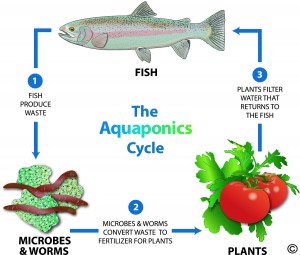
Preface
My name is Derek-Robert Cherven and I am a former United States Marine. I was trained as a Combat Engineer to build sustainable irrigation systems for Forward Operating Bases (FOB’s). This knowledge can be applied to third world countries and private citizens for both small and large-scale deployments. Although I am no longer active in the Marine Corps, the Marine Corps will forever course through my veins. There is a motto that has been permanently engrained into my soul, “Once a Marine, Always a Marine”. As a result of my training and experience, it is safe to say that there are three things that I hold dear: God, Family and Country. However recently, I suppose that you could add a forth dimension to my paradigm of passion… Protecting my children in the wake of climate change, and ensuring the survival of humanity. I want to ensure that their generation, and that all future generations have the knowledge and the know-how to combat the approaching storm of Global Warming.
In a society where residential and commercial interests are overtaking farmlands and forests, American’s have been forced to rely on mass-produced “food-like” products that contain harmful pesticides and Genetically Modified Organisms (GMO’s). In a World where climate change is warming our planet, raising our sea levels, and transforming our agriculture lands into barren wastelands, humanity needs a sustainable, reliable, and readily available option to produce quality food for their survival. This research paper will not only serve as an educational tool on why Aquaponics is the solution to our problem, but it will also serve as a survival guide on how anyone with a basic understanding of the science of Aquaponics can farm their own organic produce and fish in an easy, clean and sustainable manner.
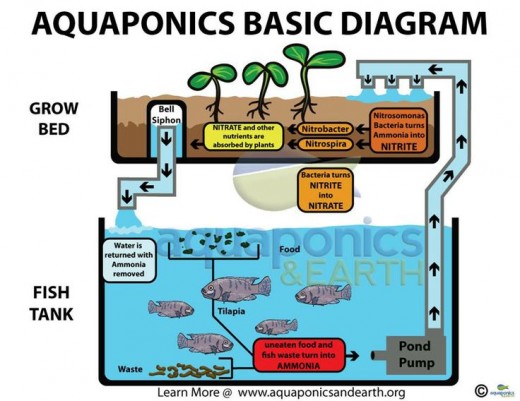
Evolution of Agriculture and Monoculture.
Before I can delve into the background of Aquaponics, I must first discuss the evolution of agriculture and how it relates to humanity and sustainable sciences. When humans begin to master a new technology, they often enhance it and adapt it to new uses. The domestication of wheat is a good example of this process. [1] According to the National Academy of Sciences, on the topic of genetic selection, “[b]y recovering seeds from different archaeological sites and noticing changes in their characteristics over the centuries, scientists have hypothesized how wheat was altered by humans over time”. Research suggests that approximately 11,000 years ago, people in the Middle East began growing plants for food rather than relying entirely on the wild plants and animals they could gather or hunt. These early farmers began saving seeds from plants with particularly favorable traits and planting those seeds in the next growing season. The article expounds the process of artificial selection, which creates a variety of crops with characteristics particularly suited for agriculture. For example, “farmers over many generations modified the traits of wild wheat so that seeds remained on the plant when ripe and could easily be separated from their hulls. Over the next few millennia, people around the world used similar processes of evolutionary change to transform many other wild plants and animals into the crops and domesticated animals we rely on today”. [1]
Recent technological advances have allowed scientists to begin making hybrids of wheat with some of their wild relatives from the Middle East and abroad. Using these crossbreeds, they have propagated varieties of wheat that are increasingly resistant to droughts, heat, and pests. More recently, however, molecular biologists have been identifying the specific genes in plant’s DNA that are responsible for their advantageous traits; in order for the genetic traits to be incorporated with other crops. These advances rely on an understanding of evolution to analyze the relationships among plants and to search for the traits that can be used to improve crops.
With the good, comes the bad.
— Derek Robert Cherven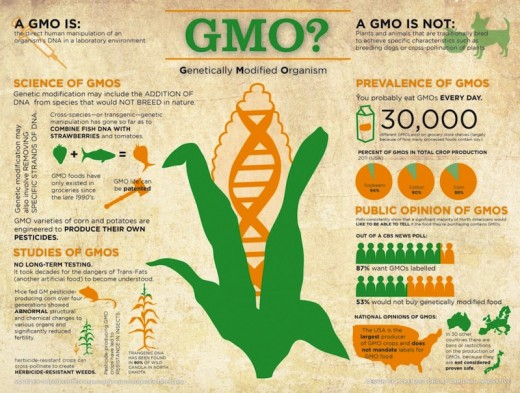
Any technology that offers benefits will usually come with risks as well. In order to make wise decisions about using a technology, we must understand its potential impacts well enough to decide whether the risks are acceptably low. What are the risks posed by the use of genetic engineering (GE) in agriculture? According The Union of Concerned Scientists (UCS), a nonprofit science advocacy organization based in the United States, the answers fall mostly into two categories: risks to human health, and environmental impacts. [2]
Health risks of genetic engineering have often been described as exaggerated and alarming; thus implying that food made from GE crops is inherently unsafe. It should be noted that there has not been enough data collected to properly conclude that products derived from GE crops, such as starch, sugar and oils, are different than those derived from conventionally bred crops. It should also be noted that it would be an exaggeration to say that there are no health risks associated with GE because not enough is yet known: research on the effects of specific genes has been limited—and tightly controlled by the industry. [2]
According to a 1996 New York Times investigation, we learned the ways in which genetically engineered crops could cause health problems. For instance, “genes from an allergenic plant could transfer this unwanted trait to the target plant. This phenomenon was documented in 1996, as soybeans with a Brazil nut gene—added to improve their value as animal feed—produced an allergic response in test subjects with Brazil nut allergies”. [3] The report further suggests that, “unintended consequences like these underscore the need for effective regulation of GE products. In the absence of a rigorous approval process, there is nothing to ensure that GE crops that cause health problems will always be identified and kept off the market”. [3]
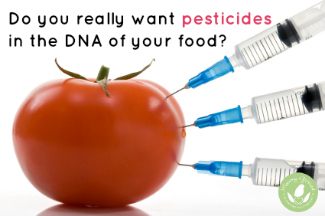
But perhaps the most damaging impact of GE in agriculture so far is the phenomenon of pesticide resistance. Millions of acres of U.S. farmland are now infested by weeds that have become resistant to the herbicide glyphosate. Overuse of Monsanto's "Roundup Ready" trait, which is engineered to tolerate the herbicide, has promoted the accelerated development of resistance in several weed species. [3]
As farmers search for new ways to fight back against the new invasive species, agriculturalists are turning to older, more toxic herbicides such as 2,4-D and dicamba. Agribusiness companies have begun to develop new genetically engineered crops engineered to tolerate these older herbicides. There is no guarantee that the Roundup Ready story will not repeat itself, thus producing a new wave of resistant weeds and thus completing the circle of metamorphic evolution all over again. [3]
According to our textbook, “[a]n organism exposed to a chemically stable pesticide that takes years to break down may accumulate high concentrations of the toxin, a phenomenon known as bioaccumulation. Organisms at higher levels on food webs tend to have greater concentrations of bioaccumulated pesticide stored in their bodies than those lower on food webs, through a process known as biological magnification” (p. 82). [4]

In 2012, a research paper entitled, “Long term toxicity of a Roundup herbicide and a Roundup-tolerant genetically modified maize” was published in The Journal Food and Chemical Toxicology. The peer-reviewed paper entitled resulted from a two-year toxicity study, which cost $3.6 million USD, and was conducted at the University of Caen by Gilles-Eric Séralini and seven of his colleagues. According to the study, “100 male and 100 female Sprague Dawley rats [were] divided into twenty groups with 10 rats each. Ten diets were tested separately on the males and females. The diets comprised 11 percent, 22 percent and 33 percent genetically modified corn (NK603) and the rest standard laboratory rat food; NK603 corn that had been treated with Roundup, also at 11, 22 and 33 percent; and corn that had not been genetically modified, accompanied by differing concentrations of Roundup in the water. A control group was fed 33 percent non-GMO corn; the rest of their diet was standard laboratory rat food.” [5]
The paper’s abstract conclusion stated: "In females, all treated groups died 2–3 times more than controls, and more rapidly. This difference was visible in 3 male groups fed GMOs. All results were hormone and sex dependent, and the pathological profiles were comparable." [5]
The report was retracted after a lawsuit from Monsanto argued that not enough research was conducted, and that the report was damaging to the company’s image. After two more years of research conducted by Séralini and his team, the report was re-published, again causing controversy with Monsanto and other GE food companies. Regardless of how the battle plays out in court, it is important that people who consume genetically engineered food should be aware of the potential risks, substantiated or unsubstantiated, until further testing has been completed. After all, the tobacco companies fought tirelessly to defend their affirmation that smoking was healthy and did not cause cancer. American’s should take a note from history and air of the side of caution until the final conclusions have been drawn. In the meantime, aquaponics is a solution to GMO’s and will be demonstrated later in this report.
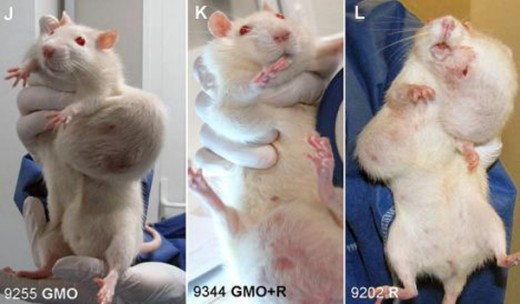
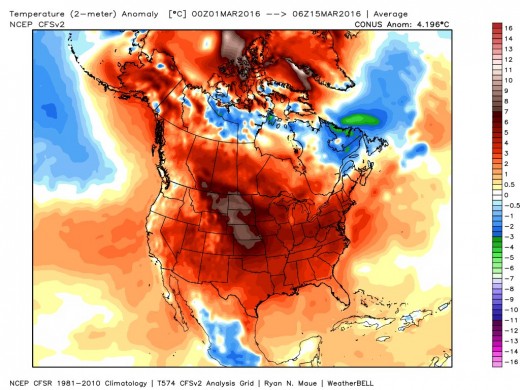
Global Warming is a Real Threat.
Climate change, also referred to as “global warming”, refers to the rise in average surface temperatures on Earth. An overwhelming scientific consensus maintains that climate change is due primarily to the human use of fossil fuels, which releases carbon dioxide and other greenhouse gases into the air.
According to NASA and the Intergovernmental Panel on Climate Change (IPCC), “Scientists have high confidence that global temperatures will continue to rise for decades to come, largely due to greenhouse gases produced by human activities. The IPCC, which includes more than 1,300 scientists from the United States and other countries, forecasts a temperature rise of 2.5 to 10 degrees Fahrenheit over the next century”. [6]
The IPCC further suggest that the temperature increase will interrupt the length of the frost-free season (and the corresponding growing season), which has already been increasing nationally since the 1980s. The largest increases have been occurring in the western United States, thus affecting ecosystems and agriculture. Furthermore, the IPCC states that, “[i]n a future in which heat-trapping gas emissions continue to grow, increases of a month or more in the lengths of the frost-free and growing seasons are projected across most of the U.S. by the end of the century, with slightly smaller increases in the northern Great Plains. The largest increases in the frost-free season (more than eight weeks) are projected for the western U.S., particularly in high elevation and coastal areas. The increases will be considerably smaller if heat-trapping gas emissions are reduced”. [6]
The rise in temperature has been causing severe heat waves and droughts in the Southwest. Weather patterns across the globe are projected to become more intense, and cold waves less intense. Summer temperatures will continue to rise, and a reduction of soil moisture, which exacerbates heat waves, is projected for much of the western and central U.S. in summer. By the end of this century, what have been once-in-20-year extreme heat days (one-day events) are projected to occur every two or three years over most of the nation. [6] As a result, Global Warming will decimate the planet’s agriculture system and force humanity into making some difficult survival decisions.
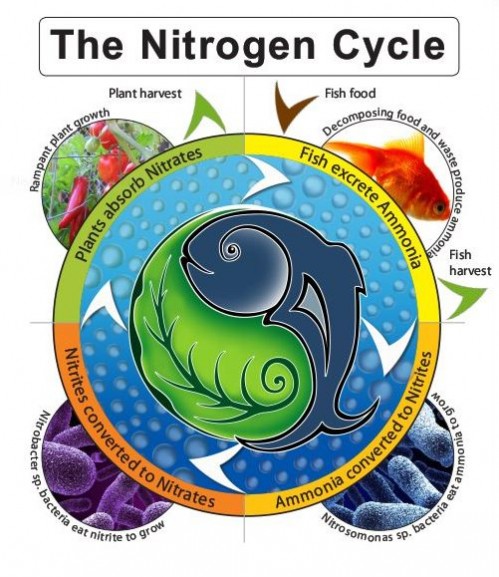
Aquaponics is the Solution.
What is Aquaponics? It is a system of aquaculture in which the waste produced by farmed fish or other aquatic animals supplies nutrients for plants grown hydroponically, which in turn purify the water. It is a marriage between aquaculture and hydroponics.
Aquaponics produces both fish and organic vegetables in a sophisticated, yet natural and dynamic ecosystem. Aquaponics can be developed by homeowners for personal use or scaled to feed an entire community with clean, organic vegetables and fresh fish. It is farming of the future! Aquaponics uses no gasoline, oil or other fossil fuels to produce the food you consume. It simply goes from the Aquaponics ecosystem right to your plate; making for a truly sustainable and eco-friendly way to eat.
With industrial farming and agriculture descending into the realm of the downright grotesque, independent food production has become an increasingly attractive option for American consumers. When it forces us to choose between food that can make you sick and food that is simply food, the process by which our food is grown becomes one of the most important considerations we may face.
Aquaponics is 100% chemical free meaning that only organic vegetables and fish are produced. If chemicals, pesticides, or fertilizers are used, the fish will die; effectively killing the system generator. Simply put, aquaponically grown food cannot be cheated.
Until GMO’s and pesticides have been completely banned from our food supply, and until Global Warming has been curbed, the fate of humanity rests in this simple science. It is sustainable, it is clean, and it will keep you alive.
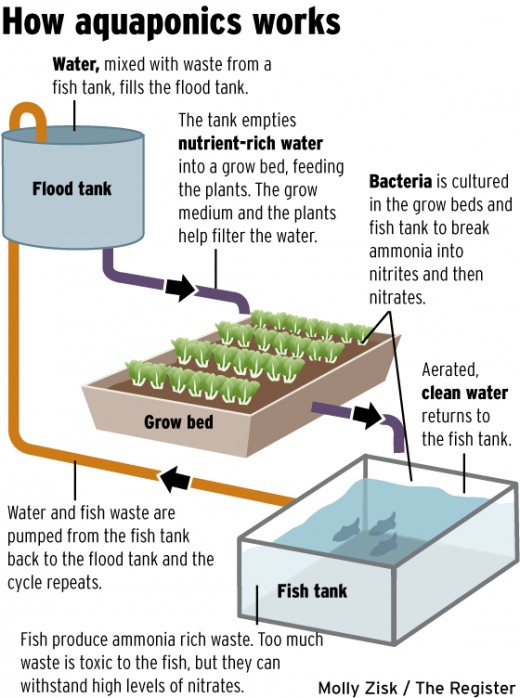
Fish Species Suited for Aquaponics
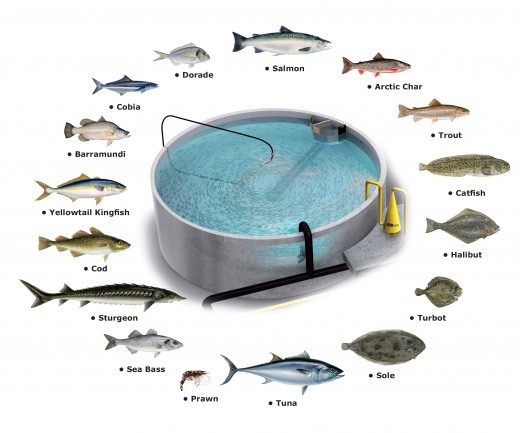

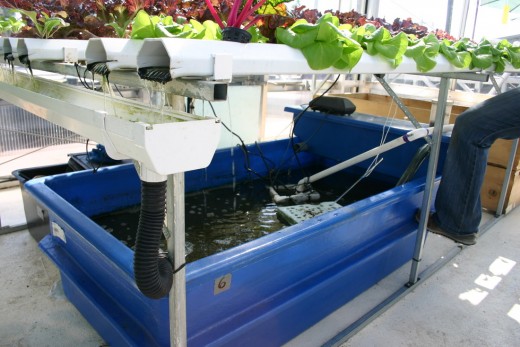
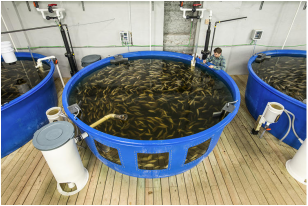
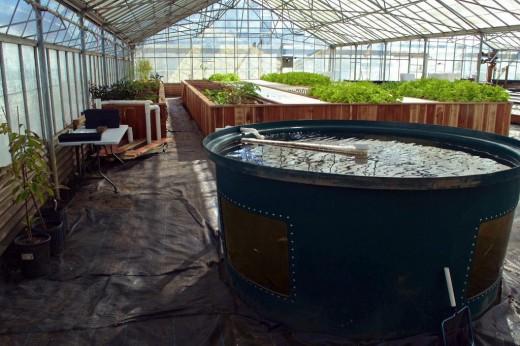
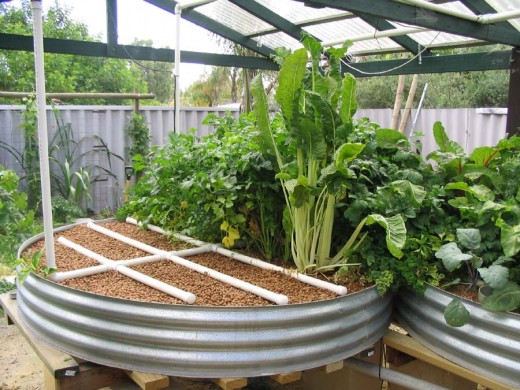
Works Cited:
[1] "Evolution in Agriculture: The Domestication of Wheat." Evolution Resources from the National Academies. The National Academy of Sciences, Engineering and Medicine, n.d. Web. 16 May 2016.
[2] "8 Ways Monsanto Fails at Sustainable Agriculture." Suppressing Research. Union of Concerned Scientissts, n.d. Web. 16 May 2016.
[3] Leary, Warren E. "Genetic Engineering of Crops Can Spread Allergies, Study Shows." The New York Times. The New York Times, 13 Mar. 1996. Web. 16 May 2016.
[4] Berg, Linda R., Mary Catherine. Hager, and David M. Hassenzahl. Visualizing Environmental Science. Hoboken, NJ: Wiley, 2011. Print.
[5] Séralini, Gilles-Eric. "Food and Chemical Toxicology | 0278-6915 | Elsevier."Food and Chemical Toxicology | 0278-6915 | Elsevier. N.p., 2 Aug. 2012. Web. 16 May 2016.
[6] "Global Climate Change: Effects." Climate Change: Vital Signs of the Planet. NASA, n.d. Web. 16 May 2016.


